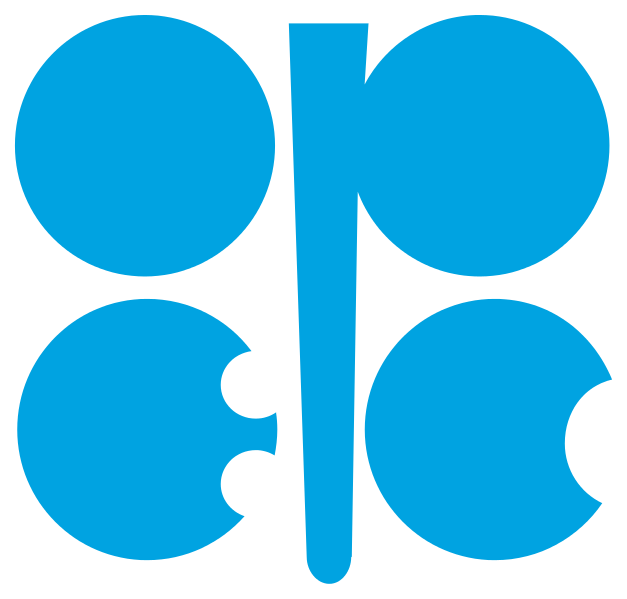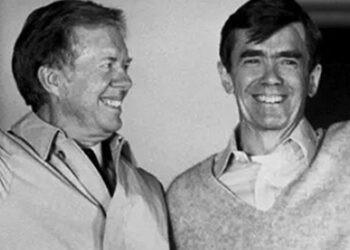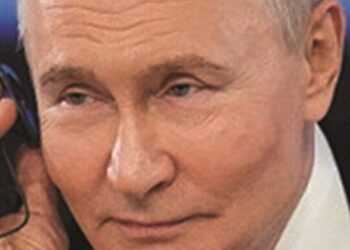December 21, 2018
After two months of rapidly declining oil prices, the downturn seems to have halted this month when 25 oil producers led by Saudi Arabia and Russia agreed to cut their output. Iran, which has also seen its production slashed by President Trump’s sanctions, was excluded from any cuts.
 OPEC announced December 7 that the 15-member cartel and a group of 10 other oil producers led by Russia would cut output by 1.2 million barrels a day—more than the 1.0 million barrels that many oil analysts had been saying was the minimum that needed to be taken off the market.
OPEC announced December 7 that the 15-member cartel and a group of 10 other oil producers led by Russia would cut output by 1.2 million barrels a day—more than the 1.0 million barrels that many oil analysts had been saying was the minimum that needed to be taken off the market.
Saudi Arabia indicated it would cut 450,000 barrels and Russia said it would go down by 228,000 barrels—which leaves 522,000 barrels to be taken off the market by everybody else. But no one announced country-by-country cutback figures, so it will never be known who is complying and who is not.
The cutbacks will take effect January 1 and last for six months. But OPEC will next meet earlier than usual. It will meet in April, apparently because the US waivers allowing eight countries to keep buying Iranian oil will expire April 5. If any of the waivers are renewed, that will push OPEC one way; if none are removed, it will push the cartel another way.
The deal Saudi Oil Minister Khalid Al-Falih hammered out meant Saudi Arabia was once again shouldering the lion’s share of OPEC’s cuts, as it did in the 20th Century, something it has long insisted it would never do again.
The agreement also seemed to rely on Russia brokering an agreement between the Saudis and Iran.
And, important politically, the cutback meant Saudi Arabia was ignoring Donald Trump, who had tweeted his demand that the Saudis keep output high to keep the price of gasoline for his voters low.
“Saudi economic self-interest trumps Trump,’’ Mike Rothman, president of Cornerstone Analytics Ltd., told Bloomberg News.
Many had expected Saudi political interests to trump Saudi economic interests. Donald Trump is the only world leader to have defended Saudi Crown Prince Mohammad bin Sultan from those who accuse him of being a bloodthirsty killer.
The outcome of the talks in Vienna shows how OPEC was able to pull off a juggling act. Al-Falih’s dilemma: cut production and anger Trump; or let oil prices plunge and risk damage to a Saudi budget that requires oil prices above $70 a barrel in 2019.
“Low prices are actually not good for the US economy,’’ Al-Falih said, a riposte to Trump’s repeated calls for OPEC to open the taps. “I know for a fact that oil and gas producers in the US are probably breathing a sigh of relief that we’re providing some certainty and visibility for 2019.’’
On Twitter just before OPEC assembled, Trump urged OPEC not to restrict oil flows. But, interestingly, he fell silent after OPEC ignored his plea. He did not go into a rant as he often does when he is rebuffed.
For Al-Falih, the willingness to cut production represented a shift. In a speech last year in Houston, he insisted that his country would not surrender market share to the US. He has now done that.
Ironically, the very week that OPEC acted, the US Energy Department announced that the United States had become a net exporter of oil for the first time in seven decades, with August production rising at the fastest rate in a century. Iran has said Saudi Arabia cannot pump enough to replace Iranian oil on the world market, but it is US firms that are doing the most to skewer the Islamic Republic. In the 1970s, OPEC became a powerful organization because the US economy had become dependent on imported oil. That is no longer true.
There was a bumpy road on the way to the decision of the 25 countries to cut some output.
On December 5, Brian Hook, the American diplomat handling Iran sanctions, was spotted by reporters leaving the Hyatt Hotel in Vienna, where he had breakfasted with Saudi Oil Minister Al-Falih. Iranian Oil Minister Bijan Namdar-Zanganeh fumed that Hook’s meeting was “meddlesome” and accused Hook of being “unprofessional,” in effect telling Al-Falih whom he could and could not talk with.
The Hook meeting was so diplomatically explosive that the Saudi Energy Ministry, at first, denied it happened. A few hours later, Al-Falih was forced to come clean. “We discussed how the energy market is evolving and the availability of supply in the event that waivers are not renewed,’’ Al-Falih told reporters.
A day later, at OPEC headquarters, heated words were exchanged between Namdar-Zanganeh and Al-Falih, people familiar with what happened told Bloomberg News.
Iran insisted it should be exempt from any reduction deal. After a full day of meetings, Namdar-Zanganeh and Al-Falih failed to reach agreement. Al-Falih said he was “not confident’’ the cartel would agree on a deal. The OPEC meeting appeared on the brink of collapse.
On the second day of talks, it fell to Alexander Novak, the poker-faced Russian energy minister, to help break the impasse. He met separately with Al-Falih and Namdar-Zanganeh—an unprecedented demonstration of Russia’s newfound role at OPEC, despite not being a member.
With Novak’s help, OPEC was able to reach a solution, Bloomberg reported. Iran would get its exemption, but it wouldn’t be mentioned in OPEC’s written communique. The ploy allowed everyone to sell the deal at home as a victory.
However, some thought the big Falih-Zanganeh clash was just for show. After all, Iranian production has fallen from 3.8 million barrels a day a few months ago to 3.34 million in October, so the idea that it would take another cut wasn’t logical. In fact, OPEC has in the past exempted Libya and Venezuela from cuts when they had lost output. And, in fact, Libya and Venezuela were also exempted from this latest cut.
The cut will be applied based on October production. Output from some countries, such as Iraq, has already fallen since then, meaning that in reality some countries may not need to reduce further. On the other hand, Saudi Arabia’s output in November was significantly higher than in October, so its real cut will be much higher than 450,000 barrels a day. Saudi Arabia will cut more than any other country.
Novak, the Russian minister, made a point of thanking Saudi Arabia for “taking a bigger burden than its share to balance the market.’’ He said Russia would cut its output by 228,000 barrels a day. But he said that cut would be applied over several months, not all on January 1. However, the cut agreement is only for six months—so what does it mean that Russia’s cuts will be applied over several months?
In 2014 and 2015, after several years of just watching the market and enjoying high prices, OPEC gasped as prices dropped like a rock from over $100 to under $30 in 2016. In January 2017, the Saudis and Russians put together the 25-nation grouping and slashed output, helping boost prices back up over $70 a barrel. Last June, the 25 reversed course and started raising output in an effort to replace lost Iranian production. Now, it sees that it has boosted output too high, or at least too soon, since the Trump waivers allow Iran to keep selling a bit more than half what it used to.














